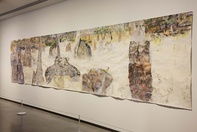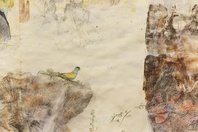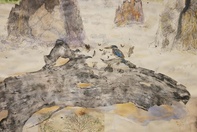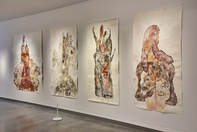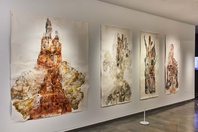John Wolseley
Dja Dja Wurrung Country, Whipstick Forest, Victoria
2021
Displayed 2021 at Museum of Contemporary Art Australia
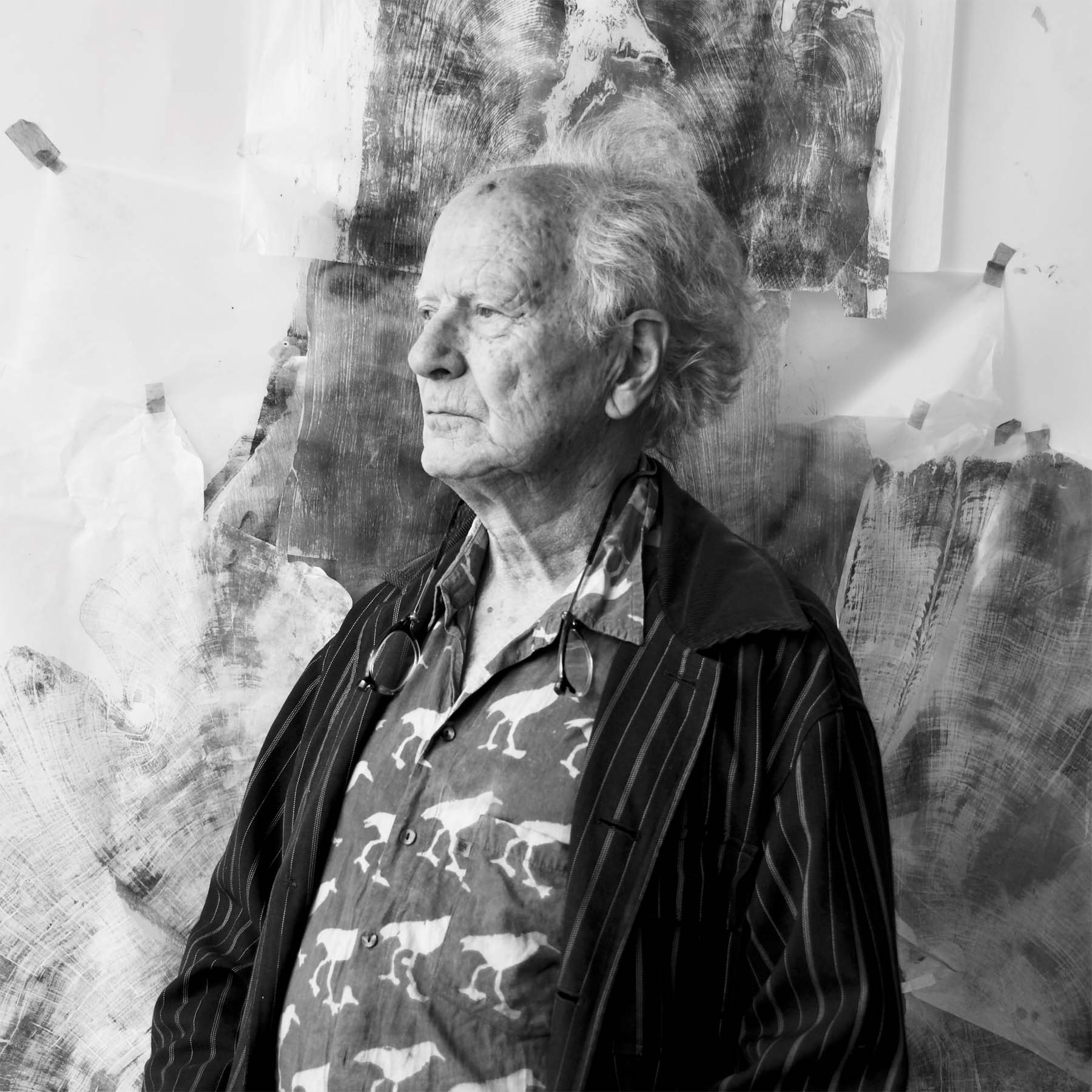
John Wolseley
Born 1938, Somerset, England. Lives and works on Dja Dja Wurrung Country, Whipstick Forest, Victoria
John Wolseley describes himself as a hybrid of an artist and scientist. He uses watercolour, collage, frottage, nature printing and other methods of direct physical or kinetic contact to document the state of the Earth and consider the ways in which life dwells and moves within the landscape. Over the past decade, Wolseley has worked in conversation with Yolŋu artist Mulkuṉ Wirrpanda to document the edible and medicinal plants, creatures and termite mounds of North-Eastern Arnhem Land. This resulted in the major touring exhibition Midawarr Harvest in 2017 and subsequent displays, including the presentation of both senior artists’ works in The National 2021.
Photograph: Brodie Ellis
Image courtesy and © the artist
Artist text
by Rachel Kent
What can we learn from nature around us? This question is at the heart of John Wolseley’s art, which explores the living world in all its complexity and beauty. Combining the scientific and the poetic, his drawings, watercolours, prints and rubbings document the unique flora and fauna of Australia, against a backdrop of environmental change. Incorporating the materials of nature within his works – charcoal scavenged from bushfire sites, wood finely traced with larvae tracks, heat-fired tips of termite mounds – he creates a vibrant, living universe that is as wondrous as it is diverse.
Over the past decade, Wolseley has produced several bodies of work in conversation with the renowned Yolŋu artist Mulkuṉ Wirrpanda, his adoptive sister, who passed away in February 2021. This relationship has proven particularly fruitful for each artist, resulting in two major bodies of work exploring the ecosystem of the floodplains of North-Eastern Arnhem Land (Miḏawarr); and the mangroves and shellfish of the region (Maypal).
Inaugurated in The National 2021, a third and final grouping of works by Wirrpanda and Wolseley draws inspiration from the trees and termite mounds of North-Eastern Arnhem Land, and the diverse animal communities that co-habit within them. Presented together in the gallery, the artists’ works explore concepts of mutuality in the animal world, and eusocial communities in which social organisation is cooperative, not competitive, and labour and brood care are shared. Citing the work of evolutionary biologist Lynn Margulis on symbiosis, and the Gaia Hypothesis (with James Lovelock), Wolseley proposes a world built on balance and interconnection. He says:
My woodcut and watercolour works are devoted to tracks, spoors, tunnels and the fossil traces of all the insects, birds and animals which live within tree trunks and termite mounds. Both trunk and mound incorporate similar pathways of the great family of fungi, as they perform their cosmic tasks, known colloquially as the Wood Wide Web.
Wirrpanda’s bark paintings, recycled dance boards and memorial poles (ḻarrikitj) present cross-sections of the mounds, revealing the tunnels, cavities and diverse creatures within them. Wolseley’s large-scale works on paper entitled Indwelling I-IV (2021) build on this narrative, situating bird species including the striated pardalote, forest kingfisher and hooded parrot within the mounds, along with the insects who build and maintain them.
Presented on four large sheets of cotton paper, Indwelling I-IV combine drawing, printmaking techniques (etching, woodcut, linocut) and rubbing (frottage), their surfaces built up with multiple sheets of semi-transparent paper that are applied to the heavier base. A close inspection of the works reveals a world teeming with life and complexity. In one panel, a rare parrot species shares a symbiotic relationship with the moths that only breed in its nest; in another, meat ants and termites co-exist peacefully with the occasional skirmish before daily life resumes.
Wolseley’s Magnetic, arboreal and subterranean termite nests on the savannah plains of East Arnhem Land, a seven-metre-long work on paper, presents the mounds in context. Inspired by the landscape around Gangan, which he visited with Wirrpanda in December 2017 in search of rare edible tubers, it documents the abundant trees, shrubs and edible plants of the region. Importantly, it also says much about the two artists’ relationship, which was built on the exchange of knowledge and mutual cooperation.
Balance in nature, and cooperation in the animal kingdom, are twin themes in Wolseley’s works for The National. Overlooked and dismissed in our competitive race for planetary domination, they are principles that would guide us well. Now, however, as Wolseley points out, it appears things have shifted:
During the COVID pandemic, it is interesting to think this virus which emerged as a result of humankind’s lack of respect for the living matrix of life, has resulted in the fabric of that matrix fighting back.
Artist’s acknowledgements
John Wolseley would like to thank all at the Buku-Larrnggay Mulka Centre and artists Brodie Ellis and Kaitlyn Gibson for their invaluable help in creating the work for this exhibition. He is represented by Roslyn Oxley9 Gallery, Sydney.
